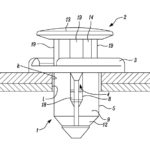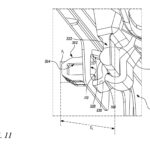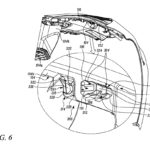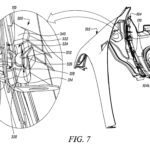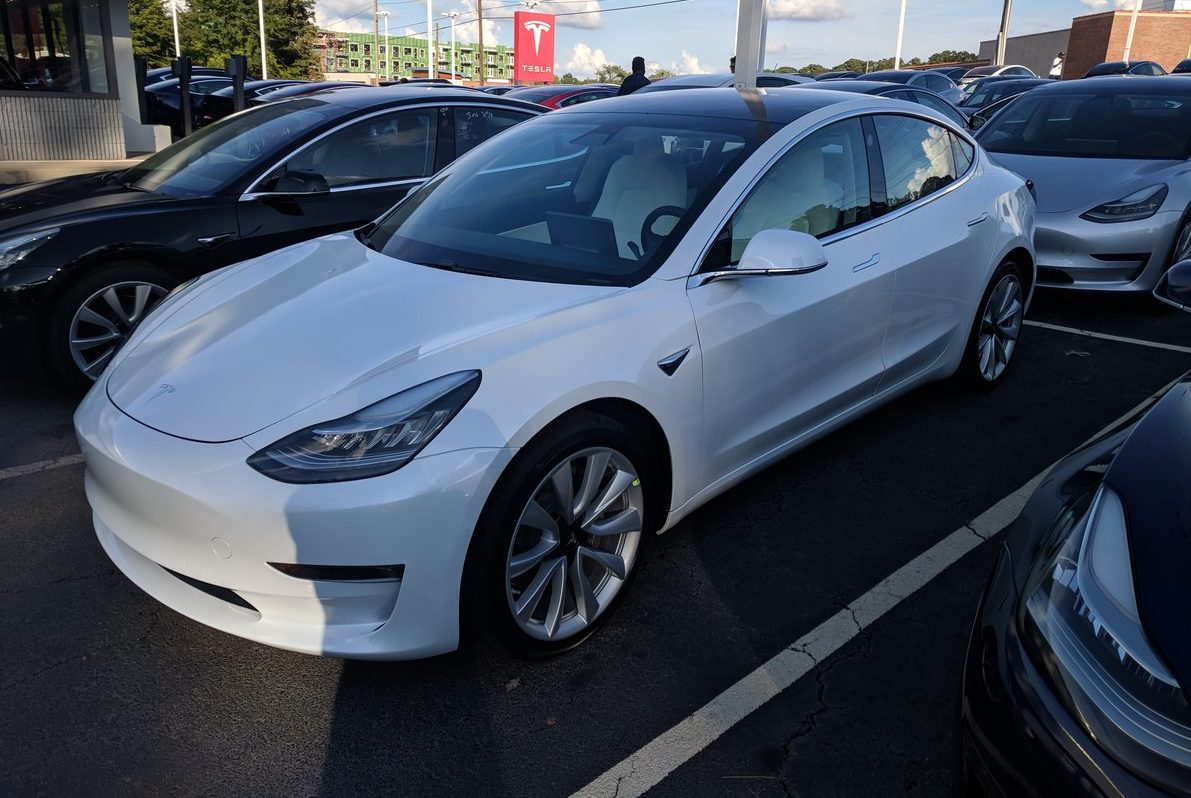
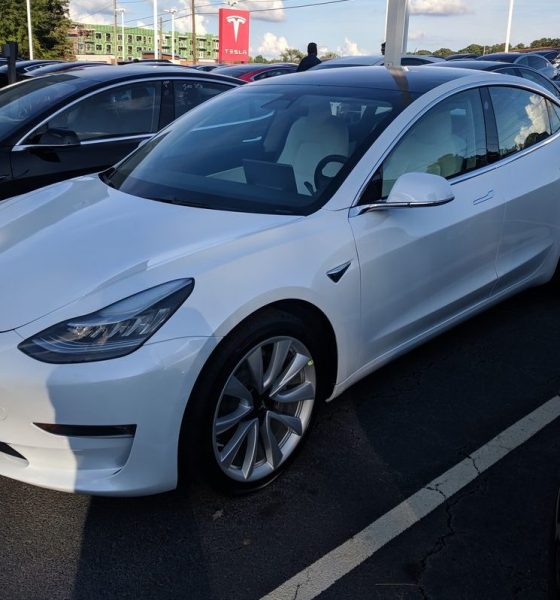
News
Tesla patent addresses panel gaps using clever clamping assembly
The build quality of Tesla’s vehicles would likely see a notable improvement in the near future. As revealed in a recently published patent, the company is working on a new type of clamping assembly that allows some flexibility between panels during manufacturing. With such a system in place, gaps between a vehicle’s panels could be adjusted and aligned during the assembly process.
Tesla’s newly published patent, titled “Clamping Assembly for Securing Together a Pair of Adjacently Located Panels,” describes a simple yet clever way to address misaligned body panels. Tesla notes that conventional clamps, which are usually utilized to attach body panels to a vehicle’s frame, are unable to connect panels and their individual tolerances effectively due to their rigid structure.
“Although (conventional clamps) can be used to secure adjacently located parts to one another, the clamp does not account for parts that have large manufacturing tolerances or parts that must not be fixed in at least one direction (that is there must be play between the parts). Attempting to use a traditional clamp to secure two parts that must have some play between them may introduce unsightly gaps and/or overlaps between the parts, reducing the aesthetic appearance upon assembly.”
- [Credit: US Patent Office]
- [Credit: US Patent Office]
Diagrams depicting Tesla’s design for its new clamping assembly. [Credit: US Patent Office]
Tesla’s patent outlines a new type of clamping assembly that is more flexible. Such a system enables Tesla to adjust panels during assembly, allowing the company to address any possible misaligned panels before the vehicle is sent off to delivery. Tesla explains the rationale of its new clamp as follows.
“The present invention was derived in light of the foregoing challenges, and it is an object of the present invention to provide a clamping assembly that provides flexibility in securing parts that are manufactured to larger dimensional tolerances and in which play is necessary between adjacent parts during, or after, assembly. The clamping assembly of the present invention can accommodate misalignment of the part or parts owing to variances in one or both parts during manufacture and/or necessary play between the parts by allowing flexibility in adjusting the positions of the parts relative to one another in one direction while still securing the parts to one another. That is, the clamping assembly secures together a pair of manufactured parts, in which the manufactured parts require play along at least one direction while confining the movement of the parts in a second direction.
“According to certain embodiments of the present invention, the clamping assembly includes a retainer member. The retainer member may have a U-shape groove that allows for the insertion of a tab member and a narrow retaining throat that confines a bulbous portion of the tab member in multiple directions. For example, once inserted into the groove of the retainer member, the tab member with the bulbous portion is confined from moving vertically and horizontally. Once inserted into the groove of the retainer member, movement of the tab member with the bulbous portion is possible by sliding the tab member and the bulbous portion thereof relative to a plane P 2 of the groove, i.e., by sliding the tab member and the bulbous portion into or out of the page. Thus, with use of the clamping assembly disclosed herein, some play or flexibility between two panels is possible, and the panels can be adjusted relative to one another during assembly.”
- [Credit: US Patent Office]
- [Credit: US Patent Office]
Diagrams depicting Tesla’s design for its new clamping assembly. [Credit: US Patent Office]
Tesla has been challenged with misaligned panels on its vehicles in the past. When Detroit’s Sandy Munro started his teardown of an early production Model 3, for one, the auto veteran lamented that the vehicle’s panel gaps were so inconsistent, they were reminiscent of a Kia from the 90s. Munro was eventually blown away by the Model 3’s battery, tech, ride quality, and performance, but his criticism of the car’s build quality were notable until he completed his analysis. Tesla later issued a response to Munro’s criticism of the early production Model 3’s build quality, stating that “the standard deviation of all gaps and offsets across the entire car has improved, on average, by nearly 40%, with particular gap improvements visible in the area of the trunk, rear lamps and rear quarter panel.”
A letter to Tesla employees sent last April revealed that Elon Musk is taking the issue of misaligned panels very seriously. In his message, Musk noted that while the build quality of the company’s vehicles continues to improve, Tesla must strive to push harder in ensuring that its electric cars have design tolerances that are a factor of ten better than any other vehicle in the auto industry.
“Most of the design tolerances of the Model 3 are already better than any other car in the world. Soon, they will all be better. This is not enough. We will keep going until the Model 3 build precision is a factor of ten better than any other car in the world. I am not kidding. Our car needs to be designed and built with such accuracy and precision that, if an owner measures dimensions, panel gaps, and flushness, and their measurements don’t match the Model 3 specs, it just means that their measuring tape is wrong,” Musk wrote.
There is no denying that misaligned panels are an issue for Tesla’s electric cars, particularly early production models produced in the past. In a way, such issues are part of Tesla’s growing pains, considering that mastering panel alignment is among the more basic aspects of vehicle manufacturing. That said, Elon Musk’s unrelenting stance on improving build quality, together with clever ways to address and avoid misaligned panels, might soon allow the company to shake off its panel gap issues altogether.

Elon Musk
Elon Musk’s X will start using a Tesla-like software update strategy
The initiative seems designed to accelerate updates to the social media platform, while maintaining maximum transparency.

Elon Musk’s social media platform X will adopt a Tesla-esque approach to software updates for its algorithm.
The initiative seems designed to accelerate updates to the social media platform, while maintaining maximum transparency.
X’s updates to its updates
As per Musk in a post on X, the social media company will be making a new algorithm to determine what organic and advertising posts are recommended to users. These updates would then be repeated every four weeks.
“We will make the new 𝕏 algorithm, including all code used to determine what organic and advertising posts are recommended to users, open source in 7 days. This will be repeated every 4 weeks, with comprehensive developer notes, to help you understand what changed,” Musk wrote in his post.
The initiative somewhat mirrors Tesla’s over-the-air update model, where vehicle software is regularly refined and pushed to users with detailed release notes. This should allow users to better understand the details of X’s every update and foster a healthy feedback loop for the social media platform.
xAI and X
X, formerly Twitter, has been acquired by Elon Musk’s artificial intelligence startup, xAI last year. Since then, xAI has seen a rapid rise in valuation. Following the company’s the company’s upsized $20 billion Series E funding round, estimates now suggest that xAI is worth tens about $230 to $235 billion. That’s several times larger than Tesla when Elon Musk received his controversial 2018 CEO Performance Award.
As per xAI, the Series E funding round attracted a diverse group of investors, including Valor Equity Partners, Stepstone Group, Fidelity Management & Research Company, Qatar Investment Authority, MGX, and Baron Capital Group, among others. Strategic partners NVIDIA and Cisco Investments also continued support for building the world’s largest GPU clusters.
News
Tesla FSD Supervised wins MotorTrend’s Best Driver Assistance Award
The decision marks a notable reversal for the publication from prior years, with judges citing major real-world improvements that pushed Tesla’s latest FSD software ahead of every competing ADAS system.

Tesla’s Full Self-Driving (Supervised) system has been named the best driver-assistance technology on the market, earning top honors at the 2026 MotorTrend Best Tech Awards.
The decision marks a notable reversal for the publication from prior years, with judges citing major real-world improvements that pushed Tesla’s latest FSD software ahead of every competing ADAS system. And it wasn’t even close.
MotorTrend reverses course
MotorTrend awarded Tesla FSD (Supervised) its 2026 Best Tech Driver Assistance title after extensive testing of the latest v14 software. The publication acknowledged that it had previously criticized earlier versions of FSD for erratic behavior and near-miss incidents, ultimately favoring rivals such as GM’s Super Cruise in earlier evaluations.
According to MotorTrend, the newest iteration of FSD resolved many of those shortcomings. Testers said v14 showed far smoother behavior in complex urban scenarios, including unprotected left turns, traffic circles, emergency vehicles, and dense city streets. While the system still requires constant driver supervision, judges concluded that no other advanced driver-assistance system currently matches its breadth of capability.
Unlike rival systems that rely on combinations of cameras, radar, lidar, and mapped highways, Tesla’s FSD operates using a camera-only approach and is capable of driving on city streets, rural roads, and freeways. MotorTrend stated that pure utility, the ability to handle nearly all road types, ultimately separated FSD from competitors like Ford BlueCruise, GM Super Cruise, and BMW’s Highway Assistant.
High cost and high capability
MotorTrend also addressed FSD’s pricing, which remains significantly higher than rival systems. Tesla currently charges $8,000 for a one-time purchase or $99 per month for a subscription, compared with far lower upfront and subscription costs from other automakers. The publication noted that the premium is justified given FSD’s unmatched scope and continuous software evolution.
Safety remained a central focus of the evaluation. While testers reported collision-free operation over thousands of miles, they noted ongoing concerns around FSD’s configurable driving modes, including options that allow aggressive driving and speeds beyond posted limits. MotorTrend emphasized that, like all Level 2 systems, FSD still depends on a fully attentive human driver at all times.
Despite those caveats, the publication concluded that Tesla’s rapid software progress fundamentally reshaped the competitive landscape. For drivers seeking the most capable hands-on driver-assistance system available today, MotorTrend concluded Tesla FSD (Supervised) now stands alone at the top.
News
Elon Musk’s Grokipedia surges to 5.6M articles, almost 79% of English Wikipedia
The explosive growth marks a major milestone for the AI-powered online encyclopedia, which was launched by Elon Musk’s xAI just months ago.

Elon Musk’s Grokipedia has grown to an impressive 5,615,201 articles as of today, closing in on 79% of the English Wikipedia’s current total of 7,119,376 articles.
The explosive growth marks a major milestone for the AI-powered online encyclopedia, which was launched by Elon Musk’s xAI just months ago. Needless to say, it would only be a matter of time before Grokipedia exceeds English Wikipedia in sheer volume.
Grokipedia’s rapid growth
xAI’s vision for Grokipedia emphasizes neutrality, while Grok’s reasoning capabilities allow for fast drafting and fact-checking. When Elon Musk announced the initiative in late September 2025, he noted that Grokipedia would be an improvement to Wikipedia because it would be designed to avoid bias.
At the time, Musk noted that Grokipedia “is a necessary step towards the xAI goal of understanding the Universe.”
Grokipedia was launched in late October, and while xAI was careful to list it only as Version 0.1 at the time, the online encyclopedia immediately earned praise. Wikipedia co-founder Larry Sanger highlighted the project’s innovative approach, noting how it leverages AI to fill knowledge gaps and enable rapid updates. Netizens also observed how Grokipedia tends to present articles in a more objective manner compared to Wikipedia, which is edited by humans.
Elon Musk’s ambitious plans
With 5,615,201 total articles, Grokipedia has now grown to almost 79% of English Wikipedia’s article base. This is incredibly quick, though Grokipedia remains text-only for now. xAI, for its part, has now updated the online encyclopedia’s iteration to v0.2.
Elon Musk has shared bold ideas for Grokipedia, including sending a record of the entire knowledge base to space as part of xAI’s mission to preserve and expand human understanding. At some point, Musk stated that Grokipedia will be renamed to Encyclopedia Galactica, and it will be sent to the cosmos.
“When Grokipedia is good enough (long way to go), we will change the name to Encyclopedia Galactica. It will be an open source distillation of all knowledge, including audio, images and video. Join xAI to help build the sci-fi version of the Library of Alexandria!” Musk wrote, adding in a later post that “Copies will be etched in stone and sent to the Moon, Mars and beyond. This time, it will not be lost.”
